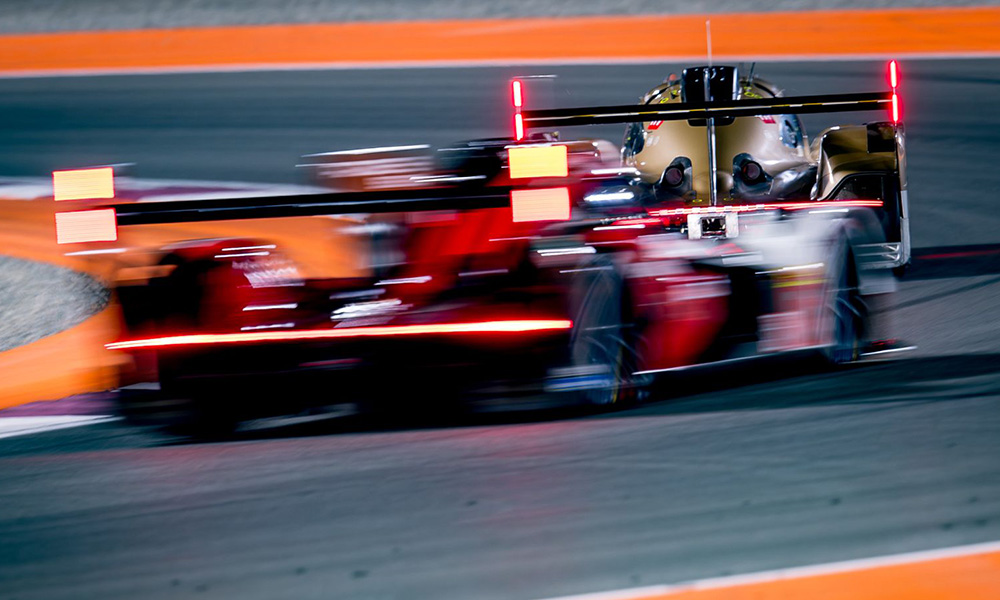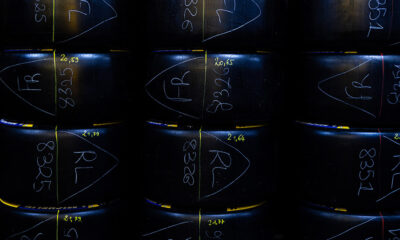
Photo: Tim Upietz/Porsche
The FIA and ACO could implement a so-called ‘two-stage’ Balance of Performance system for the Hypercar class in the FIA World Endurance Championship by as early as the next round at Imola, following an evaluation of the new proposed process at this week’s Prologue.
Sportscar365 understands that multiple Hypercar manufacturers, including Ferrari, Porsche and Peugeot, took part in evaluating the two-stage system which sees “power gain” at speeds over 210 km/h (130 mph).
A separate column in the BoP will specify a percentage change, that can be positive, negative or no change at all, when compared to the max power below speeds of 210 km/h.
ACO competition director Thierry Bouvet confirmed to reporters that the tests were completed but fell short of confirming that the system would be in place in time for the second round of the season.
The WEC introduced a similar two-stage system for the new-for-2024 LMGT3 class that is debuting in Saturday’s Qatar 1812km.
“We’re still analyzing the data,” Bouvet said regarding the Prologue test with Hypercars.
Bouvet explained the benefits of the system, which is aimed to better equalize different car concepts at high-end speeds.
“Obviously before you had some differences in drag and downforce on one car,” he said. “So you were trying to compensate the difference between power and weight and so on.
“If you added power because the car was more draggy, then you probably needed to add more weight. It was a loop which was needed.
“Now with this two-stage power, we’re able to [have] different shape acceleration and top speed.
“Basically that’s giving us another tool for us to be able to adjust the car, which then as a consequence you will have less difference in weight, which you can see in LMGT3 as an example.”
The majority of the Hypercar manufacturers appear to be on board with the new process, which goes along with the FIA and ACO’s changes to the overall BoP system for this year.
“The system is clever, to be honest,” said Peugeot Sport technical director Olivier Jansonnie. “Some manufacturers brought up this idea about a year ago, so we are wondering why it took so long to be implemented.
“But we think the idea is good and the system is clever. It gives an extra degree of freedom to balance the cars, which we think is quite sensible.”
Jansonnie added: “It can help you correlate acceleration and top speed. When you have a car that is missing top speed but is good in acceleration, for instance, you don’t have to reduce them all. You can choose between one and the other.
“There’s a bit more freedom [with the two-stage system].”
Toyota Gazoo Racing Europe technical director David Floury said: “I think it makes sense. I understand what the FIA and ACO wants to achieve.”
“We are working hard with the FIA and ACO,” said Ferrari’s head of endurance race cars Ferdinando Cannizzo. “They made a lot of effort to try and balance the car, so we need to support each other.”
Porsche LMDh factory director Urs Kuratle, meanwhile, indicated that the BoP used this weekend in Qatar, with static power levels across all speeds, has already come as a step forward compared to last year.
However, Kuratle also indicated support of the two-stage system.
“There’s a lot of measures the governance bodies are doing towards a more equal BoP and we fully trust in that,” he told Sportscar365.
“It seems to be quite OK in Qatar. I’m not sure equalized is the right word for it but it seems quite equal. We’re really looking forward for the results.”
New-Look LMGT3 BoP Table Explained
While two-stage BoP is already implemented in the LMGT3 class for Saturday’s season opener, the ACO’s Bouvet clarified other fundamental changes to the BoP tables for the new production-based class.
It primarily concerns a change from the car’s power output in kW to a new power curve-based system, with changes measured in percentage points.
“Unlike Hypercar where we say, ‘This is the power curve shape, it’s the same for everybody,’ in GT3… it’s difficult to impose a certain power shape.
“So we said, ‘OK, give us individually your power shape and we use them to facilitate it. Give us your maximum power shape, we call it P0.
“P1 is 1 percent off your maximum power shape. P10 is 10 percent off.”
Bouvet said each car can have a different reference curve so it would be difficult to compare any power increases or reductions from manufacturer to manufacturer.
Another change for 2024 includes the utilization of energy allocation in LMGT3, as has been in the case in Hypercar.
Jamie Klein contributed to this report

























